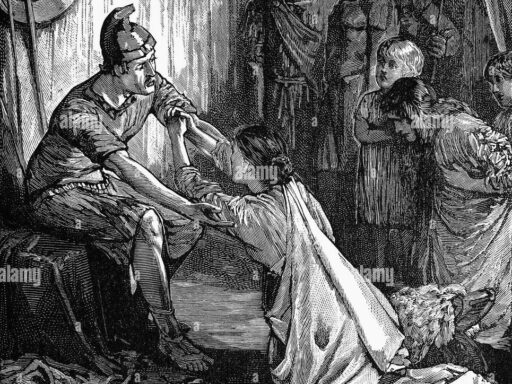German mercenaries fighting for the United States in the American Revolution were relatively uncommon but did exist, primarily through desertion and defection. Most German soldiers, known as Hessians, served the British, not the American side, and roughly 5% of them switched allegiances.

Nearly 30,000 German troops, mainly from Hesse-Kassel and other small German states, fought for the British during the war. These soldiers were hired out as units by their rulers to the British crown, not acting as independent mercenaries. The Hessians earned regular wages from their princes, who received payments from Britain. However, their pay was modest due to the small, resource-limited German states that supplied them.
Desertion and defection among German mercenaries were significant. Around half of the Hessians never returned to Europe after 1783, with an estimated 5,000 to 6,000 settling in America. Some mercenaries joined the American forces, with records showing about 83 Brunswickers served actively with colonial forces, implying roughly 5% switched sides. Many others deserted and assimilated into American society.

The British refusal to maintain captured German troops, unlike British prisoners of war who were supported by their own side, encouraged desertion. This financial neglect pushed some mercenaries toward American service or settlement after the war.
Payment during service was low. Hesse-Kassel and similar states were small and poor, limiting soldiers’ wages. Their princes profited from British subsidies, while the soldiers received minimal pay.

| Aspect | Details |
|---|---|
| Number of German Mercenaries | Approx. 30,000 served Britain; ~5% defected to Americans |
| Origin | Primarily Hesse-Kassel, Hesse-Darmstadt, Brunswick |
| Service Nature | State-hired units, not independent mercenaries |
| Pay | Low wages paid by princes who profited off British subsidies |
| Post-war Settlement | 5,000–6,000 stayed in America |
For precise history and social impact, consult works such as Brady Crytzer’s Hessians: Mercenaries, Rebels, and the War for British North America or Charles Neimeyer’s America Goes to War.
- German soldiers mainly fought for Britain; few for the US
- Desertion led to some joining American side or settling in America
- Soldiers received low pay; princes earned subsidies from Britain
- Approximately 5,000–6,000 Germans remained in America post-war
Unraveling the Mysteries of German Mercenaries in the American Revolution

How common was it for German mercenaries to fight in the American Revolution, and what did they earn? The short answer is: quite common on the British side, a bit rare for the American side, and paid modestly at best. Let’s dive into the surprisingly complex world of these imported soldiers and explore what their experience might have been like.
The idea that your girlfriend descends from a German mercenary who fought for the United States in the Revolution sparks some intriguing historical questions. It’s a tale full of unexpected twists, desertions, and a dash of international bargaining.

German Mercenaries in the American Revolution: Who Were They?
Nearly 30,000 German soldiers fought for the British during the American War of Independence. Most came from small German states like Hesse-Kassel and Hesse-Darmstadt, earning the collective nickname “Hessians.”
Now, here’s an interesting nugget: these guys weren’t independent mercenaries, like swords-for-hire wandering the world. They were regular soldiers whose rulers “rented” out their armies as a bundle to Britain. Think of it as a government subcontracting out troops. The practice was fairly common in 18th-century Europe – a marketplace for soldiers, if you will.
The Numbers Game: Fighting and Staying in America
Not all German troops returned home once the war ended in 1783. Roughly half went back, but between 5,000 and 6,000 decided to stay permanently in America. Some experts, like Charles Neimeyer who wrote America Goes to War, estimate as many as a quarter of the 30,000 German soldiers settled in the new nation, either by choice or circumstance.
But here’s a curveball: some German soldiers didn’t just fight for Britain—they flipped sides and fought for the American colonists. Brunswick troops provide proof: records show at least 5% of certain units defected, suggesting about 375 Germans fought alongside the revolutionaries. Then there were the deserters who quietly integrated into American society without hauling muskets again.
So, How Much Did These “Mercenaries” Get Paid?
Here’s where the glamour fades. Despite the mercenary label, most German soldiers received only modest regular wages from their home princes. The princes pocketed subsidies paid by the British crown for troop leasing, making this more a business deal than a payday for the foot soldiers.
Exactly how much a Hessian soldier earned isn’t neatly documented, but because Hesse-Kassel was a small, relatively poor state, the salaries were not generous. These soldiers faced austere conditions, and “mercenary” pay did not mean fortune.
More intriguingly, if the soldiers were captured by the Americans, their upkeep typically rested with their original side—in this case, the British. But the British often refused to pay for captured German soldiers’ maintenance. This lack of support encouraged desertions and made switching allegiances more appealing.
Why Would German Soldiers Fight for the United States?
It sounds wild, but economic hardship, lack of pay, brutal war conditions, and sometimes ideological sympathy pushed some German soldiers to desert or even join American forces. Having their upkeep cut off by the British made staying loyal less appealing.
Imagine being an 18th-century soldier far from home, fighting for a cause you didn’t really choose, and not getting support when captured. Some took their chances and started new lives in the colonies. This creates a real possibility that your girlfriend’s ancestor was among those rare Germans who fought on the American side.
What Does This Mean for Descendants Today?
Many descendants of German mercenaries live in the U.S. now because, after the war, a significant number chose to stay. They helped shape early American communities, especially where German traditions mingled with new American ideals.
For folks exploring family trees tangled in these narratives, it’s fascinating to realize that allegiance was fluid. A “German mercenary” ancestor might have been a loyal soldier to a prince, a switcher to the revolutionary cause, or a deserter seeking a fresh start. Each possibility adds rich texture to family history stories.
So, Is Your Girlfriend’s Story Common?
Finding a German mercenary who fought for the American side is unusual but not impossible. The majority fought for Britain, yet a small, notable minority—perhaps a few hundred—joined the colonial fight or stayed after deserting. The story has enough historical grounding that it deserves attention and celebration.
And the pay? Those “mercenaries” earned basic wages at best and got no financial goldmine even if they switched sides. Life as a rented soldier was more about duty and survival than about riches.
Want to Dig Deeper?
- Reading Brady Crytzer’s Hessians: Mercenaries, Rebels, and the War for British North America is an enjoyable way to understand the mercenary phenomenon.
- For recruitment and the political backing of these forces, try Charles Ingrao’s The Hessian Mercenary State.
- To explore how German mercenaries and their families adapted culturally in early America, Friederike Baer’s The Trial of Frederick Eberle adds layers of immigrant perseverance and patriotism.
At the end of the day, history shows us that war isn’t a neat story of “us” versus “them.” It’s full of complicated choices, shifting loyalties, and mercenaries with surprisingly human stories. So next time your girlfriend shares her family lore, you can confidently say, “Yep, that’s one heck of a historical legacy!”




